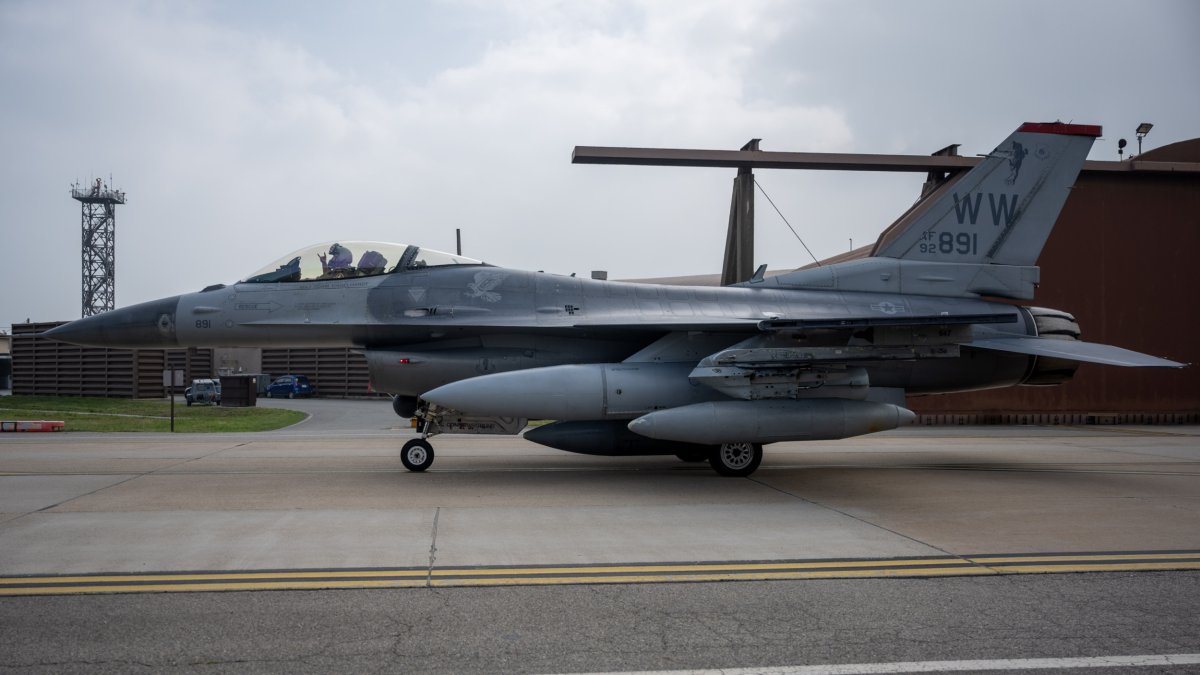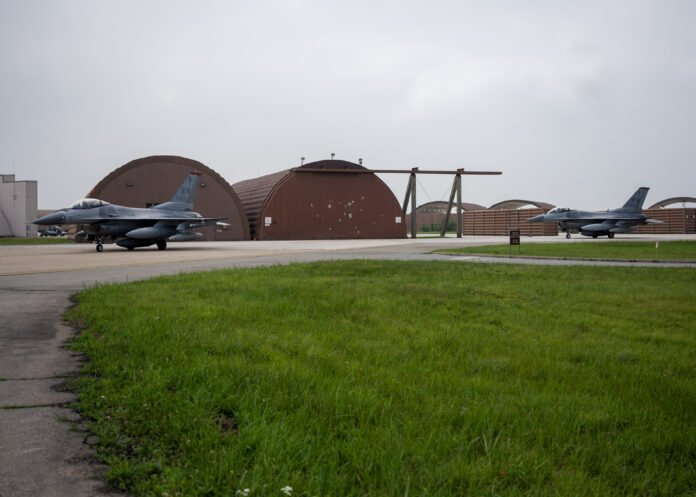A fleet of upgraded F-16 fighter jets arrived in South Korea recently as part of an ongoing effort to boost the United States’ and its ally’s defenses against nuclear-armed North Korea.
Newsweek has reached out to the North Korean Embassy in China for comment via email.
Why It Matters
The U.S. military currently has over 28,500 personnel stationed in South Korea to deter and defend against North Korea‘s threats, as both sides technically remain in a state of war following the conclusion of an armistice—but not a peace treaty—after the Korean War.
The F-16, also known as the Fighting Falcon, is a fourth-generation fighter jet operated by both the U.S. and South Korea. Last summer, U.S. forces stationed on the Korean Peninsula created the first “super F-16 squadron” by consolidating combat aircraft at Osan Air Base.
A second F-16 “super squadron” is set to be established at Osan Air Base in October. Both enlarged units are assigned 31 fighter jets each to increase readiness and combat capability.
What To Know
The U.S. Air Force 51st Fighter Wing—headquartered at Osan Air Base—announced on Tuesday that F-16 jets that had received avionics system upgrades landed at Osan between June 26 and 27, marking a significant milestone in strengthening combat readiness.
The jets, which were relocated from the 35th Fighter Wing at Misawa Air Base in Japan, have capabilities closer to those of fifth-generation aircraft—a classification that includes F-22 and F-35 jets—improving their survivability and weapon systems’ accuracy.
The upgraded Fighting Falcons would bring what the 51st Fighter Wing described as “unparalleled multi-role versatility and superior operational range” to U.S. forces in South Korea, supporting the unit’s ability to ensure peace and stability on the Korean Peninsula.

Staff Sgt. Sarah Williams/U.S. Air Force
The transfer of the fighter jets also enhances alignment between U.S. forces in South Korea and Japan, strengthening combined airpower across the Indo-Pacific region and improving the U.S. military’s ability to respond swiftly and effectively, according to the 51st Fighter Wing.
Last summer, the Pentagon announced that, as part of major upgrades to its air power in Japan, 36 F-16 jets stationed at Misawa Air Base—which are tasked with suppression and destruction of enemy air defense missions—will be replaced by 48 advanced F-35A jets.
The number of Japan-based F-16 jets transferred to South Korea remains unclear. It is also uncertain whether Osan Air Base will receive additional aircraft from Misawa Air Base.
The U.S. Air Force will continue to modernize its fleet of aircraft to maintain air superiority and outpace what it calls “evolving threats,” the 51st Fighter Wing said in a press release.

Staff Sgt. Sarah Williams/U.S. Air Force
What People Are Saying
The U.S. Air Force 51st Fighter Wing said in a press release on Tuesday: “As the U.S. Air Force’s most forward deployed, permanently-based wing, the 51st [Fighter Wing] plays a critical role in maintaining regional security. The arrival of these upgraded aircraft underscores the U.S.-ROK alliance and ensures the wing remains prepared to fight tonight.”
ROK stands for Republic of Korea, the official name of South Korea.
U.S. Air Force Captain Alexandra Sears, 25th Fighter Generation Squadron director of operations, said in a press release on Tuesday: “F-16s are one of the only multi-role fighters. They can do everything. They’re incredibly lightweight and quick, and when you upgrade the F-16s, they’re able to do so many missions, such as providing close air support like the A-10 or suppressing enemy air defense missions.”
What Happens Next
It remains to be seen how North Korea—which is estimated to possess about 50 nuclear warheads—will respond to the latest U.S. military deployment on the Korean Peninsula.


























